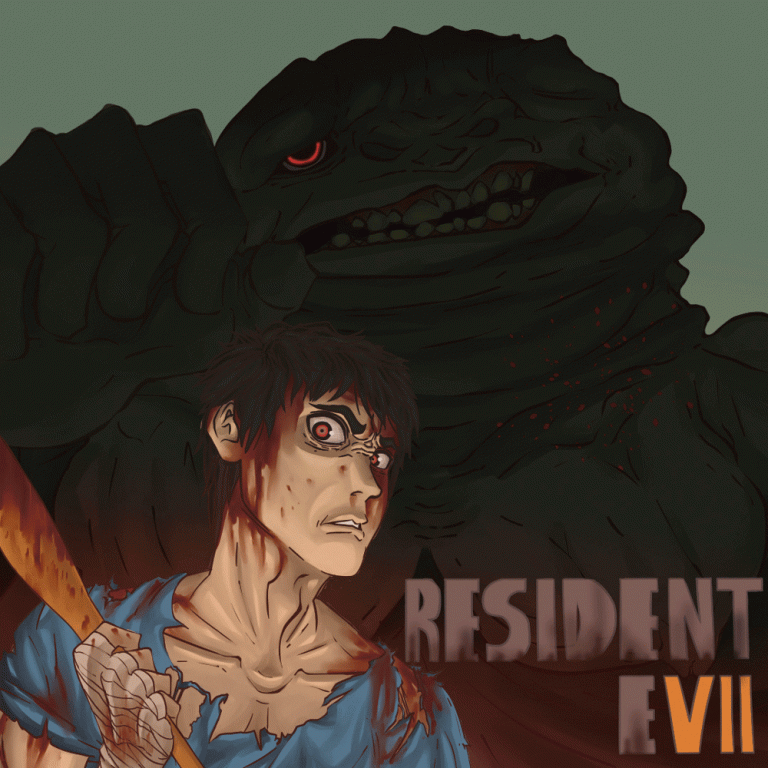
Matthew Lee
Games Reporter
The Resident Evil series is a lengthy video game storyline that has been around since 1996, with the games receiving mixed reviews throughout the years. The series held through for two decades because of its unique take on the horror genre, complex storyline, and colorful cast of characters.
After a struggle in recent years with disappointments like “Resident Evil 5” and “6”, Capcom finally hit the bullseye with “Resident Evil 7: Biohazard.” As the newest installment in the series, “Resident Evil 7: Biohazard” deviated quite a bit from the traditional gameplay, mechanics, and storyline that was familiar with “Resident Evil” fans, but offered a completely new perspective as a survival-horror type of game rather than an action RPG with zombies.
When Capcom previewed “Resident Evil 7” in a demo titled “Beginning Hour,” many longtime fans, including myself, were skeptical for the future of the game. Some complained that Capcom had “rebooted ‘Resident Evil’” by ridding it of its established format as a third-person shooter RPG, stripping away key elements such as explosively powerful weapons, disgusting boss transformations, and the classic unpredictable element of the undead. It seemed like a fairly different Resident Evil game to me and most everyone else.
However, everyone knows it’s foolish to judge a book by its cover, and Capcom gave us a big, fat “I told you so” with the actual game. Yes, “Resident Evil 7” is a completely new gaming experience, and many were thrown off by the changes when they played “Beginning Hour.” But this change proved to be the kickstart that the series needed after receiving so much criticism for the last two titles. Capcom nailed the survivor-horror element of the game in both the gameplay and aesthetics.
Gameplay-wise, it’s not too deviant from the time-tested style of a third-person shooter. “Resident Evil 7” ended up being a first-person shooter, but it did keep some old, common aspects of the previous games, such as inventory, potions, and the ability to combine items. Differences that came with this game included more of an emphasis on puzzles and survival, where in the previous games players were encouraged to shoot down obstacles and enemies rather than stealthily maneuver through them or outsmart them.
This contention is further supported by the lack of actual enemies in the game compared to the previous games. “Resident Evil 7” includes the classic mutant animals and undead humanoids that everyone knows and loves, but not around every corner. Rather, the game is about progressing the storyline through the choices you make and the information you obtain.
However, don’t be disappointed if you’re a big fan of large artillery and want to blow the brains out of undead dogs and zombies, because there are a handful of parts where you will be forced to use other weapons to power through the area.
As expected, the aesthetic and artistic style are almost completely different from past games. In “Resident Evil 7,” every stage is dark and there is not much light besides your flashlight guiding the way. The game restricts your vision to a point where you must actually be wary of your surroundings and blind spots, a challenge that previous games did not offer because of the third-person aspect and resolution.
However, with darkness comes the element of stealth for both yourself and the enemy. Be prepared for unpredictable situations and classic jump-scares that come with any good horror game.
In terms of the bosses of the Resident Evil series, I did not particularly enjoy the transformations that resulted in humans becoming ‘zombified’ animals such as a dinosaur, fly, or squid.
In contrast, I enjoyed the transformations of Deborah Harper in “Resident Evil 6” and most of the transformations of bosses in “Resident Evil 4,” particularly Saddler and Mendez. Harper, Saddler, and Mendez all mutated from normal humans into humanoid-like figures with additional appendages and elongated limbs, which made players reluctant to put them down due to the human aspect that lingered in their bodies. In Harper’s case, her mutation was unwanted, as it had been the result of forced human experiments.
“Resident Evil 7’s” boss transformations were just okay compared to the previous titles. Considering the fact that this game had fewer major bosses than previous titles, the few transformations I experienced weren’t anything out of the ordinary and fairly predictable.
Because the game was attempting to reboot the franchise, I was let down to see the washed-up concept of boss transformations not be refreshed, unlike other aspects of the game. However, this opinion might not be popular, as some fans liked the fact that Capcom stayed true to their roots and offered a handful of major bosses that paid homage to classic enemies like the worm-like Uroboros.
As a whole, “Resident Evil 7” is a fantastic game. There aren’t many aspects that require a large amount of criticism, but rather a few minor inconveniences and nitpicky complaints. The only semi-major complaint, and a common opinion amongst “Resident Evil” fans, is that the storyline of “Resident Evil 7” is tangential to the main storyline with “Umbrella.” The game manages to clear this up by poorly connecting this ‘spin-off’ to the main story, but I feel like it isn’t a solid connection.
The main concern here is that if “Resident Evil 7’s” storyline has no impact on the series’s main storyline, it will feel like an un-impactful, side-story type of game, even if the game itself is deemed a success. However, that doesn’t take too much away from the content itself.
I would recommend this game if you are either a Resident Evil fan, survival-horror enthusiast, or a gamer interested in playing a solid, storyline-based title that will offer you a good time. “Resident Evil 7” will definitely be packed with a lot of depth in terms of storyline and content, especially with the downloadable content available and on the way.










